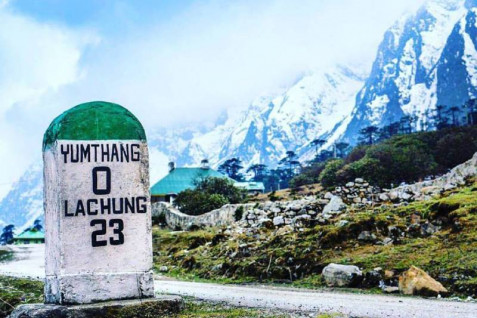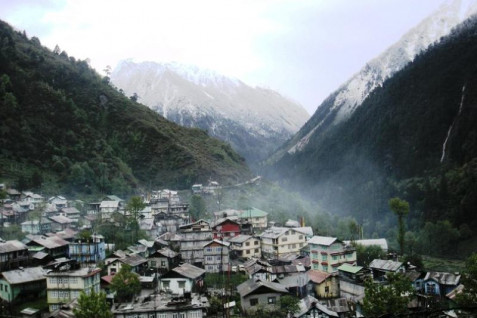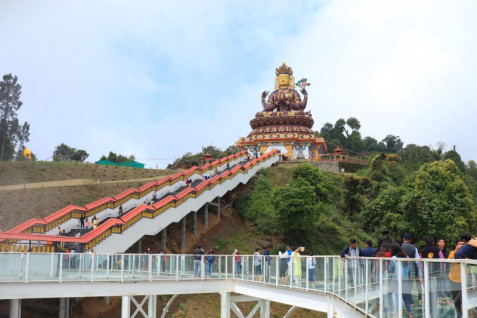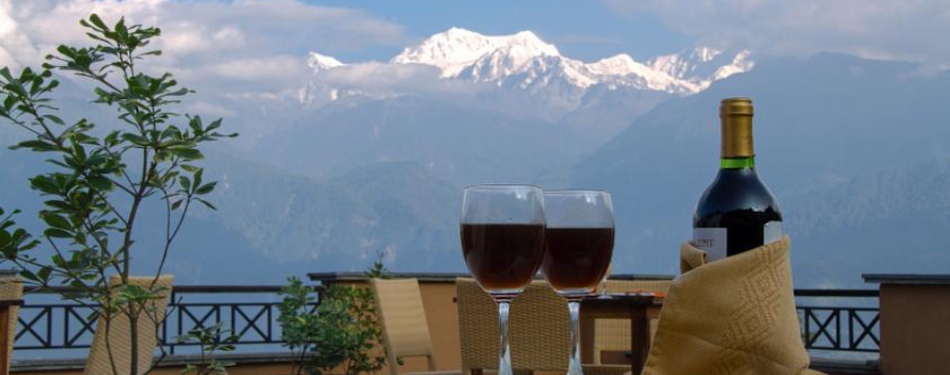
- On 07-Mar-2020
- By Drive to Northeast
Local drinks of Sikkim
Drinks in Sikkim are used for many occasions for instance weddings, birthdays, festivals etc and of course there is a variety of drinks available for people in the market. Almost everyone has some sort of knowledge about drinks but only few have the idea of how it is made. For the drink lovers there is a range of local organic drinks available in Sikkim and here is some insight on it.
TONGBA
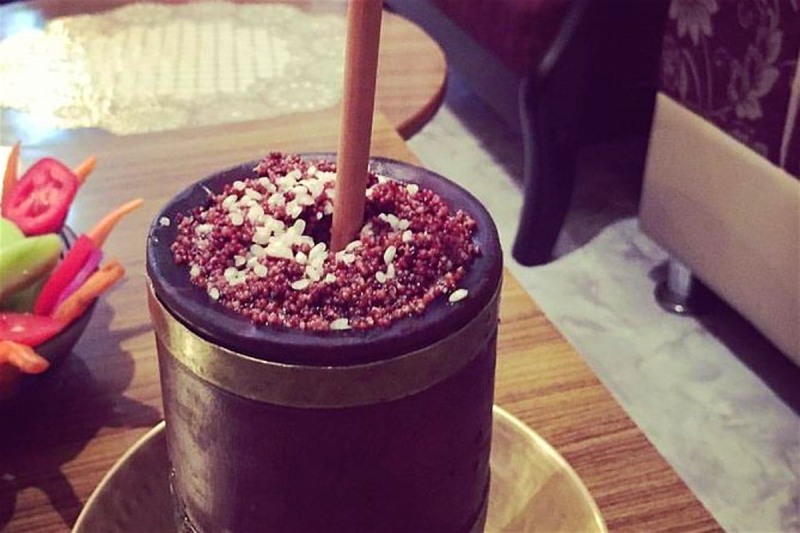 Tongba is a millet based alcoholic beverage and it is the traditional and indigenous drink of the tribal people of Sikkim the Limboo. Tongba is culturally and religiously important to the Limboo people. Offering tongba is a symbol of respect to a guest among the Limboo people and also an important drink for special occasions and festivals.
Tongba is a millet based alcoholic beverage and it is the traditional and indigenous drink of the tribal people of Sikkim the Limboo. Tongba is culturally and religiously important to the Limboo people. Offering tongba is a symbol of respect to a guest among the Limboo people and also an important drink for special occasions and festivals.
How it is made: Tongba is actually the vessel in which the fermented millet beverage known as mandokpenaa thee is held. Mandokpenaa is prepared by cooking and then fermenting the whole grain millet. The millet is cooked and left to cool after that it is mixed with khesung which is a source of yeast and bacteria. Later the entire of it is placed inside a woven bamboo basket lined with green leaves or plastic, covered with thick fold of cloth and is kept in a warm place for 1-2 days. The sweet mass is then packed tightly in air tight containers for about 7-15 days until then the fermentation is completed and the mass is converted to mandokpenaa thee. During the maturing the flavours and taste intensifies yet become more mellowed. It is consumed in a very traditional fashion the fermented millet is put in a container, also traditionally called a Tongba, and boiled water is poured in it to the brim. It is then left undisturbed for about five minutes then it is ready to drink. A fine bamboo straw with a blind end, but perforated on the side to act as a filter, is inserted into the container to suck out the warm water and alcohol from the millet grains. More hot water is added as the tongba becomes dry, and the process is repeated until the alcohol is exhausted.
CHHAANG
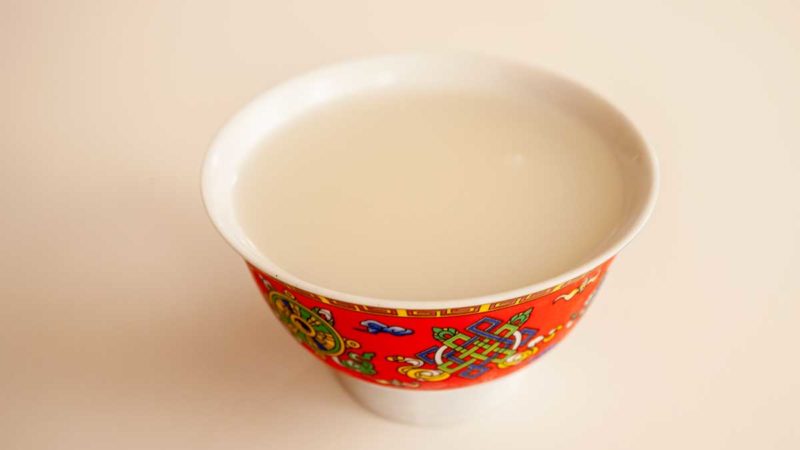 The chhaang or chang is brewed from rice and it is an alcoholic beverage very popular among the locals of Sikkim. It is used in traditional ways in festivals of Tibetian and Bhutia people of Sikkim. The mandokpenaa thee or the kodo ko jaar when it is ready to be served in a tongba it can be turned into chhaang and drank as well. Well it is almost similar but each has its own qualities. To make chhaang it is very easy the fermented jaar has to put into a sieve with a bowl underneath then pour some warm water into it and using both the hands just keep rubbing the millets until all of them are out of their juices. So after doing this you can see that all the millets will be in the sieve and all of the liquid drink will be in a bowl ready to drink. You can now pour yourself some chhaang or you are also allowed to add some dry fruits and fruits into the drink.
The chhaang or chang is brewed from rice and it is an alcoholic beverage very popular among the locals of Sikkim. It is used in traditional ways in festivals of Tibetian and Bhutia people of Sikkim. The mandokpenaa thee or the kodo ko jaar when it is ready to be served in a tongba it can be turned into chhaang and drank as well. Well it is almost similar but each has its own qualities. To make chhaang it is very easy the fermented jaar has to put into a sieve with a bowl underneath then pour some warm water into it and using both the hands just keep rubbing the millets until all of them are out of their juices. So after doing this you can see that all the millets will be in the sieve and all of the liquid drink will be in a bowl ready to drink. You can now pour yourself some chhaang or you are also allowed to add some dry fruits and fruits into the drink.
RAKSI
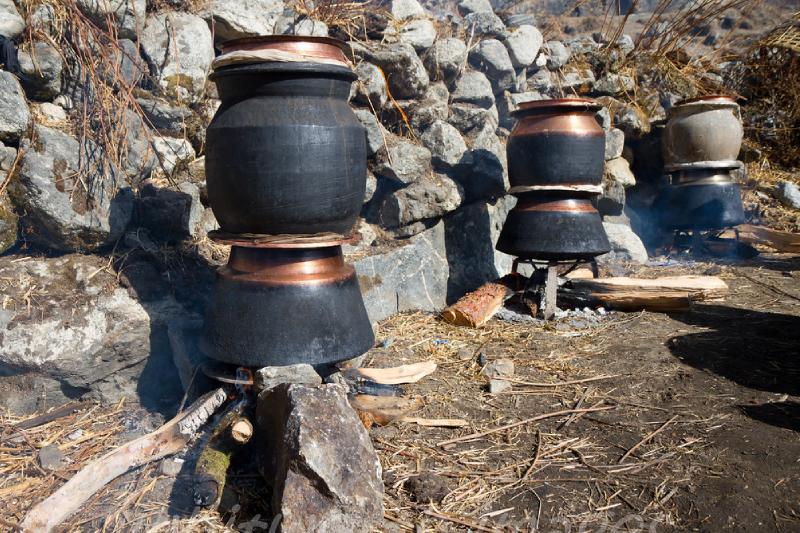 Raksi or Rakshi is the Nepali term for a traditional distilled alcoholic beverage in Sikkim and is home made. Raksi is a strong drink, clear but tasting somewhat like Japanese sake. It is made from millet (kodo) or rice with difference in flavour. While drinking raksi you will get a strong smell on the nose while giving a burning sensation straight down your throat that resolves itself into a surprisingly smooth sensation. People drink this home brew to celebrate festivals, though some think that the prized drink itself is the reason to celebrate. Raksi, is an important requirement of various religious rituals and social events. Raksi is produced, sold and mostly consumed at villages and a large amount of wood is required in this process.
Raksi or Rakshi is the Nepali term for a traditional distilled alcoholic beverage in Sikkim and is home made. Raksi is a strong drink, clear but tasting somewhat like Japanese sake. It is made from millet (kodo) or rice with difference in flavour. While drinking raksi you will get a strong smell on the nose while giving a burning sensation straight down your throat that resolves itself into a surprisingly smooth sensation. People drink this home brew to celebrate festivals, though some think that the prized drink itself is the reason to celebrate. Raksi, is an important requirement of various religious rituals and social events. Raksi is produced, sold and mostly consumed at villages and a large amount of wood is required in this process.
RICE WINE
Rice wine is also known as the bhati jaar in the local language. It is a clear wine made from fermented rice, and is known for its strong, unique taste. Making rice wine involves only two ingredients and a good amount of patience during the fermentation process.
How it is made:
Step 1- Take an amount of rice that you want and rinse the rice several times until the water is clear as opposed to murky.
Step 2- After rinsing, soak your rice in hot water for about an hour. Then use sieve to separate rice and water. Pour some water in the bottom of a steamer and bring the water to a boil. If you don’t have a steamer, you can simply boil water in a medium sized pot.
Step 3- After the water begins to boil, place the rice in the top compartment of a steamer and let it steam for around 25 minutes. If you don’t have a steamer, place the sieve of rice above the boiling water, making sure that the rice doesn’t touch the boiling water. Cover the top of the sieve with a pot lid and steam.
Step 4- After 25 minutes, take off the lid of the steamer and taste the rice. If it is still hard or slightly crunchy, use a spoon to flip the rice over and let it steam more. Once the rice has finished steaming, remove it from the heat.
Step 5- After the rice has finished steaming, spoon it out onto a cooking sheet and spread it in a thin layer to help it cool. It’s essential to let the rice cool before beginning the fermentation process. Take the yeast ball and place it in a small bowl and break the ball until it has become a fine powder. After that sprinkle it evenly over the rice.
Step 6- After you have mixed the yeast and the rice, it’s time to start the process of storing and fermenting the rice. Place the rice in an airtight container and store the rice in a warm place. After a few days, you should notice liquid is accumulating at the bottom of the container. This is rice wine. The wine is ready to drink as soon as it forms, so you can try the wine as soon as you see it accumulating.
WINE
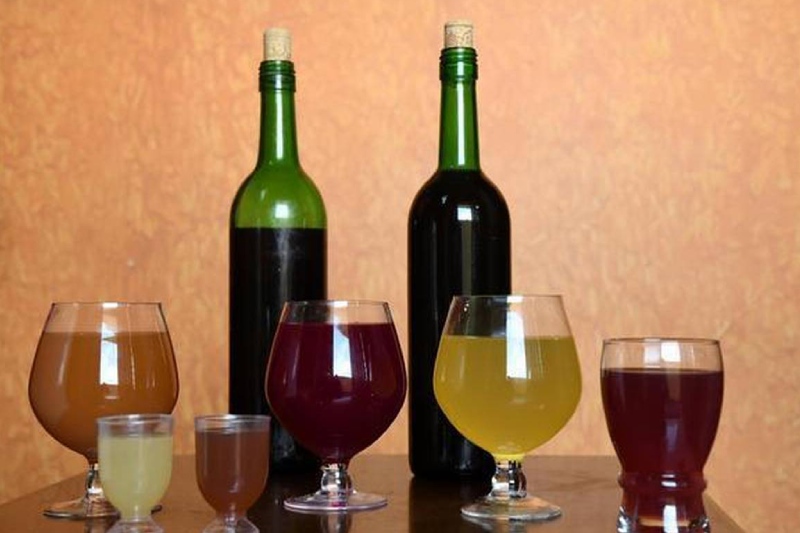 Wine is very popular in Sikkim not just any but the local wines which are also homemade. There is a wide range of varieties of wines available in Sikkim and each one of them has its significant taste. The local wines are sold at a very reasonable price and the taste won’t fail you. People have been successful in making wine of the most amazing things like Rhododendron, Banana, Guava, Ginger, Peach, Yam etc. Once you taste this colorful looking and tasty wine you will be no wonder hooked into finishing the entire bottle. The ingredients required to make the wines are the specific item that you want to make wine of and yeast. You need an air tight container and have to store for fermentation to process for months or days depending upon how strong you want the wine to be. You don’t need an occasion to drink the local wine, it is available in the market in certain places and once you taste you will know why it is the most popular in Sikkim.
Wine is very popular in Sikkim not just any but the local wines which are also homemade. There is a wide range of varieties of wines available in Sikkim and each one of them has its significant taste. The local wines are sold at a very reasonable price and the taste won’t fail you. People have been successful in making wine of the most amazing things like Rhododendron, Banana, Guava, Ginger, Peach, Yam etc. Once you taste this colorful looking and tasty wine you will be no wonder hooked into finishing the entire bottle. The ingredients required to make the wines are the specific item that you want to make wine of and yeast. You need an air tight container and have to store for fermentation to process for months or days depending upon how strong you want the wine to be. You don’t need an occasion to drink the local wine, it is available in the market in certain places and once you taste you will know why it is the most popular in Sikkim.
